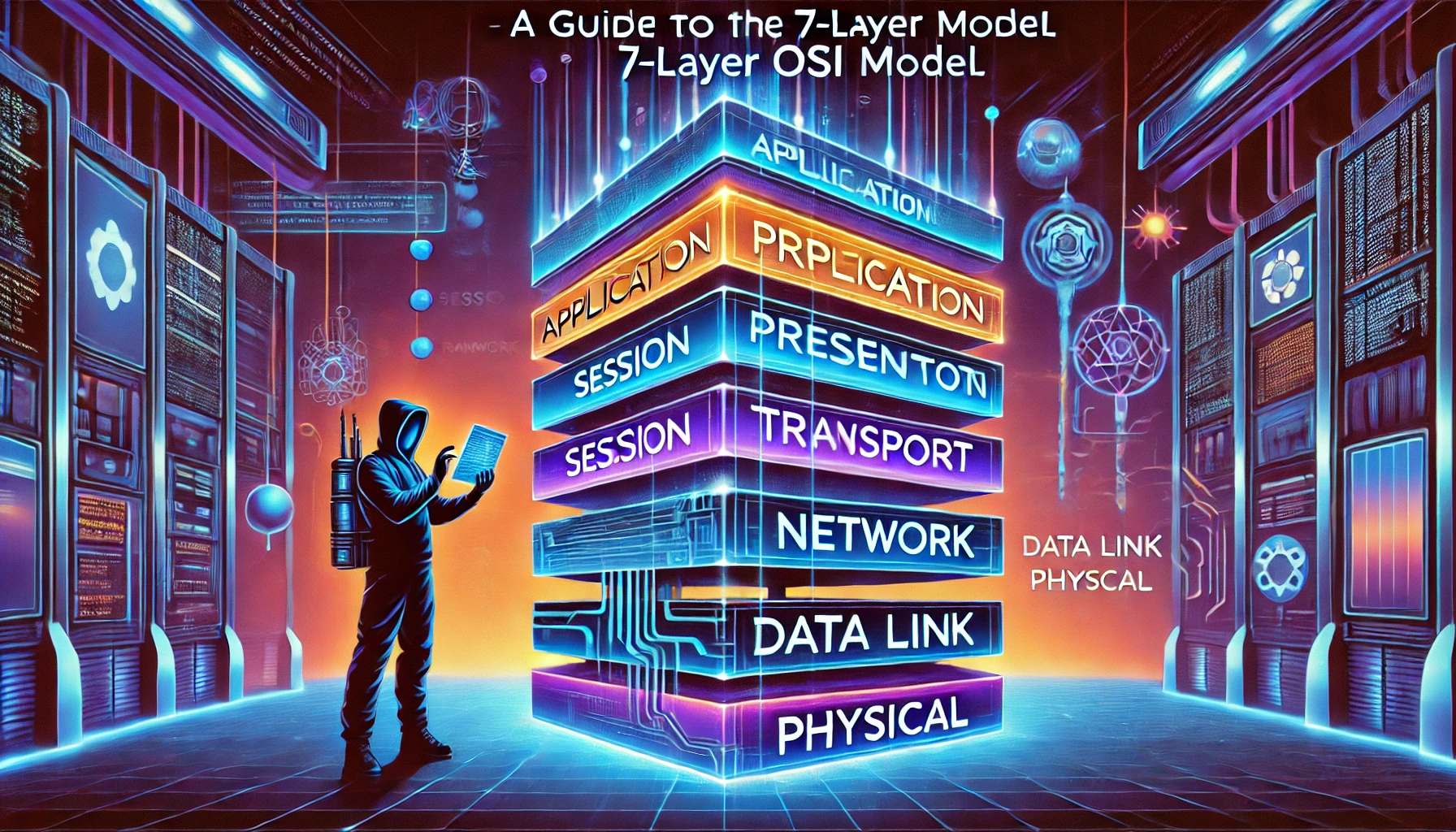A Guide to the 7-Layer OSI Model
☰ Section: Network | ⚀ Posted: 2025-04-29 02:27:04 | ⚀ Updated: 2025-04-29 02:27:04 DALL-E via ChatGPT - powered by OpenAI
DALL-E via ChatGPT - powered by OpenAI
Navigating the Digital Landscape
Computer networks are built up upon a clear schema, the OSI (Open Systems Interconnection) model that stands as a foundational framework that facilitates the communication between devices and systems. Developed by the International Organization for Standardization (ISO), the OSI model comprises seven layers, each playing a crucial role in ensuring efficient data transmission.
This article explores the details of the OSI model, breaking down its layers and shedding light on their significance. In various cases, the transitions between the layers are fluid, yet still clearly visible.
Every single Layer Explained
#1: Physical LayerAt the base of the OSI model lies the Physical Layer, dealing with the physical connection between devices. This layer defines hardware specifications, such as cables, connectors, and the transmission medium. It is responsible for converting bits into electrical signals for transmission and vice versa, ensuring the reliable transfer of raw binary data over the network.
#2: Data Link LayerMoving up, the Data Link Layer focuses on creating a reliable link between directly connected nodes. It breaks down data into frames and adds physical addresses (MAC addresses) to each frame, enabling error detection and correction. Switches operate primarily at this layer, making decisions based on MAC addresses to forward data within a local network.
#3: Network LayerThe Network Layer is where routing takes center stage. It deals with logical addressing (IP addresses) and determines the best path for data to travel from the source to the destination across different networks. Routers operate at this layer, making decisions based on IP addresses and directing data packets toward their intended destinations.
#4: Transport LayerResponsible for end-to-end communication and data flow control, the Transport Layer ensures the reliable transmission of data between devices. It segments, reassembles, and acknowledges data packets, managing flow control to prevent congestion. TCP (Transmission Control Protocol) and UDP (User Datagram Protocol) are commonly associated with this layer.
#5: Session LayerThe Session Layer establishes, maintains, and terminates connections between applications. It manages dialog control, allowing multiple processes to communicate over the network. This layer ensures that data exchange occurs smoothly, handling issues like synchronization and checkpointing during communication sessions.
#6: Presentation LayerThe Presentation Layer deals with data translation, encryption, and compression. It ensures that data sent from the application layer of one system is readable by the application layer of another. This layer plays a crucial role in data format conversion, allowing different systems to communicate despite potential differences in data representation.
#7: Application LayerAt the top of the OSI model is the Application Layer, the layer closest to end-users. It provides network services directly to applications and end-users, handling tasks such as file transfers, email services, and network management. This layer serves as the interface between the network and the software running on the device.
A little mnemonic to recall the layers order
Please: (Physical Layer)
Do: (Data Layer)
Not: (Network Layer)
Throw: (Transport Layer)
Salami: (Session Layer)
Pizza: (Presentation Layer)
Away: (Application Layer)
Finishing ...
Understanding the 7-layer OSI model is fundamental for anyone involved in networking. It provides a structured approach to conceptualizing the complexities of data communication, making it easier to troubleshoot issues, design efficient networks, and comprehend the interactions between different network elements.
As technology continues to evolve, the OSI model remains a timeless guide, laying the groundwork for the interconnected world we navigate today.
It is not that complicated, though also we professionals forget about its details sometimes. ;-)
Have lot of Fun ...
.m0rph
-----BEGIN GEEK CODE BLOCK----- GIT e+ d-- s++:++ a++ G++ C+++ M-- W+++ L++++>$ P+++ E--- W+++ N++ o+ PS+++ PE+++ Y++ PGP++ !DI t++ 5-- X++ R++ tv- b-(++) h+ r- y(++)- -----END GEEK CODE BLOCK-----